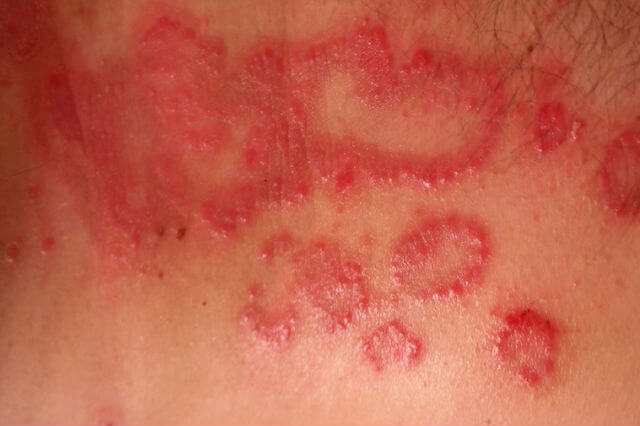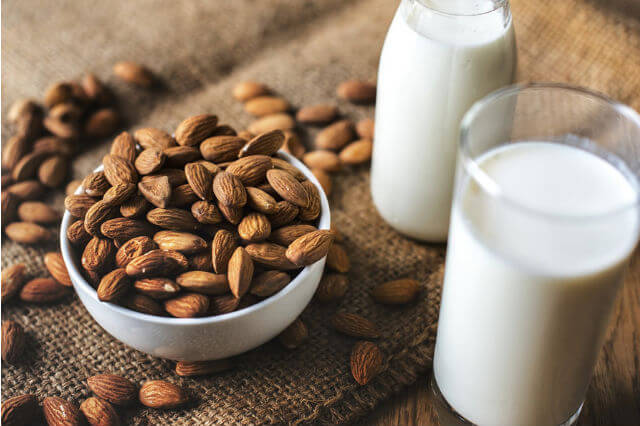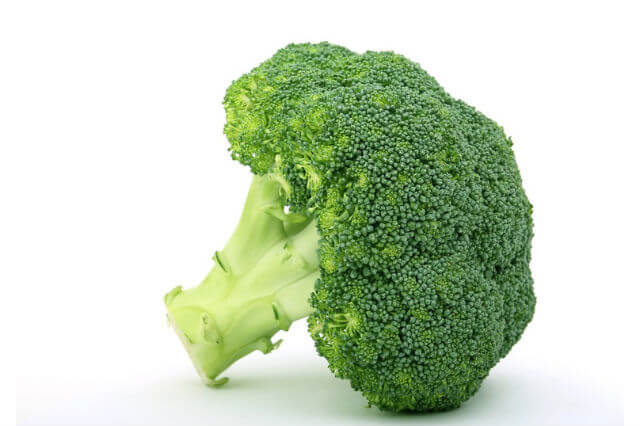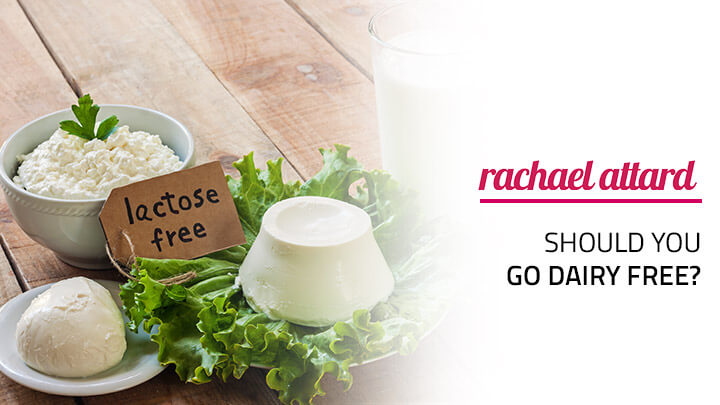Dairy Allergy Or Lactose Intolerance – How To Tell The Difference

Dairy allergy or lactose intolerance? They may sound similar, but they are in fact nothing alike.
One is an inconvenience that may prevent you from eating delicious cheesy pasta or adding milk to your coffee. The other can be life-threatening. Do you know which is which?
I’m sure many of you lovely ladies enjoy your occasional ice-cream binge – Bridget Jones’ style. But, some people don’t understand what it means to not be able to eat your favourite sweet treat.
Dairy allergy and lactose intolerance are two issues that affect many people around the world. In this post I want to talk about the difference, and what to do about it if you have one.
Dairy Allergy or Lactose Intolerance?
To understand more about the difference, let’s take a look at each of them separately.
Dairy/Milk allergy
What is a dairy or milk allergy?
A dairy allergy is when your body reacts abnormally to milk and milk products. It can cause the body to go into anaphylactic shock.
Usually, a dairy allergy is for cow’s milk products. However, it is possible to have an allergy to the milk from other animals too. Cow’s milk contains two main types of milk protein — casein and whey.
What causes a dairy allergy?
A dairy allergy is linked to an immune system malfunction. This means that your immune system sees milk proteins as damaging and will release immunoglobulin E (IgE) antibodies to combat them. When you consume these proteins again, your body goes into recovery mode, releasing histamine and chemicals that is on the onset of allergy symptoms.
A dairy allergy usually starts in childhood, but a sudden milk allergy in adults can happen too.
Signs and symptoms
You are no doubt asking yourself by now, what are the symptoms of being allergic to dairy?
The most common symptoms can happen either a few minutes or a few hours after consuming dairy. These are:
- Vomiting
- Shortness of breath
- Wheezing
- Hives (or a dairy allergy rash)
- Swelling of the lips, tongue, and throat
- Tingling mouth area

These symptoms may come a bit later:
- Watery eyes
- Abdominal cramps
- Diarrhoea (may contain blood)
- Runny nose
Milk allergy symptoms in babies are usually the same as dairy allergy symptoms in adults.
The most serious symptom is anaphylaxis, which can be life-threatening.
How can you test for it?
If you find that you have a weird reaction to dairy products and start feeling sick, then you should get to the doctor straight away. They can conduct a dairy allergy test and will let you know the results.
What to do about it and foods to avoid
Milk allergy treatment is all about avoiding foods that contain dairy products. Unfortunately, there is no way to prevent an allergy, other than not coming into contact.
The obvious foods that you cannot consume include:
- Whole milk, low-fat milk, skim milk, buttermilk
- Butter
- Yogurt
- Ice cream, gelato
- Cheese and anything that contains cheese
But the real danger lies with those food items that contain hidden milk products. Anything from canned tuna, to bread, to sauces can have some added dairy product.
You can check if a product has added dairy by looking out for these names on the ingredients list.
- Milk, Milk solids, and Milk powder
- Whey
- Whey protein
- Milk casein
- Curds
- Milk sugar
- Buttermilk
- Cheese
- Malted milk
- Dry milk solids
- Sour cream
- Whey protein concentrate
- Milk by-products
That’s a lot of ingredients to check out for! But could mean the difference between life and death.
What’s even more frustrating is that some ‘non-dairy’ products do in fact contain allergy-causing milk proteins.
Managing a dairy allergy means being cautious of everything you eat – everywhere you go. Eating out becomes more challenging, as you need to ask about food preparation and make the restaurant aware of your allergy. Some people may find that they cannot even sit next to their other half while they are eating dairy products.
You can talk to your doctor about being prepared in case of an emergency. People with a severe reaction risk wear a medical bracelet and carry an adrenaline shot with them.
RELATED POST: CLEAN EATING GUIDELINES
Lactose intolerance
What is lactose intolerance?
Lactose intolerance is the inability to digest lactose. Lactose is the main sugar in dairy products.
The intolerance occurs when a person’s body doesn’t make enough of the lactase enzyme. This is the one thing that digests lactose and turns it into simple sugars called glucose and galactose.
In general, people are born with enough lactase enzyme. Babies need it in order to digest mother’s milk but over time the amount of lactase may decrease over time. As you age, you eat a more diverse diet and rely less on milk.
When your body is unable to break down the lactose, it just moves through your body like other food. Because it is undigested, it creates problems with your digestive system.
Lactose intolerance is actually much more common than you may think. It is thought that around 75% of the worlds’ population is affected by it. And the risk varies from country to country – around 44% of American’s have the condition, but the number is a lot greater when it comes to African and Asian nations.
There are two types of lactose intolerance:
- Primary lactose intolerance: This is the most common type. It occurs when you have a decrease in lactase production as you get older.
- Secondary lactose intolerance: This is not as common. It can come about after an illness like a stomach bug or be a knock-on effect from something like celiac disease.

Signs and Symptoms
Some people have no idea that they have lactose intolerance, and in fact are misdiagnosed for other gut health issues instead.
Lactose intolerance causes digestive problems, with common symptoms including:
- Bloating
- Diarrhoea
- Gas (which can get super awkward while you’re at work!)
- Abdominal cramps
If you do experience bloating, it may not be due to lactose intolerance. It could be due to another reason, so it’s best to have a check with your doctor before assuming that you have it.
Other symptoms that some people can experience include:
- Occasional constipation
- Nausea
- Vomiting
- Urgent need to use the bathroom
How much lactose you eat and how much your body can handle plays a factor in how bad your symptoms are.
What to do about it and foods to avoid
When you are lactose intolerant, you want to cut back or avoid eating any products that contain lactose.
These dairy products contain lactose:
- Cow’s milk
- Goat’s milk
- Cheese
- Ice cream
- Yogurt
- Butter
Aside from these, there are many other products in your kitchen that have some kind of added dairy. These are foods like bread, instant soups, sauces, chocolate, cereals, ready meals, and processed meats.
You can check if a product has added dairy by looking out for these names on the ingredients list. Check out the list we included above under Foods to Avoid for dairy allergy sufferers.
Even though all dairy products have lactose in them, most people can tolerate small amounts. You may find that you are able to handle a few grams spread over the course of the day. But, a cup of yoghurt sends your stomach into a spin.
If you still would like to have some cereal in the morning for your breakfast, you may like to try a milk alternative. Thankfully there are lots of options now like almond milk and soya milk.
But let’s look on the bright side. Being lactose intolerant can be a perfect solution for curbing that chocolate addiction! There are also lots of great recipes that are dairy free. Try my gluten free and dairy free vegetable bake (tastes way better than it looks due to my poor photography skills)!
There are other ways to help treat lactose intolerance if you don’t want to cut out dairy completely:
- Taking enzyme supplements: These help you digest lactose.
- Lactose exposure: By keeping lactose in your diet, your body may get used to it and adapt accordingly.
- Probiotics: These help to reduce symptoms of lactose intolerance.
It’s best to talk to your doctor or nutritionist before undertaking any of these methods.
Aren’t dairy products important for health?
Dairy is a great source of calcium, and is also high in other nutrients and vitamins such as A, B12, and D. These nutrients combined are excellent for good bone health and higher bone mineral density.
If you do have dairy allergy and/or lactose intolerance, there are still ways to get the important nutrients that you would usually get from dairy products.
It is recommended that adults have an intake of 1000 mg of calcium per day. Luckily there are plenty of other options for getting your intake without having to think about supplements.
Some calcium rich foods:
- Kale
- Broccoli
- Fortified fruit juice
- Fortified non-dairy milk
- Canned fish with bones (salmon, sardines, whitebait)
- Dried figs
- Soy beans
- Bok choy
- Fortified tofu
Conclusion
Suffering from a dairy allergy or lactose intolerance is not the end of the world. It just means that you need to manage your lifestyle and eating habits better, and have an all-important fridge makeover.
Having one or the other doesn’t mean that you can’t indulge in some delicious treats once in a while! Check out my yummy recipes for raspberry cheesecake, caramel banana muffins, and coconut and raspberry cake. All are dairy free!
Do you suffer from a dairy allergy or lactose intolerance? How did you find out you had it? Do you have any problems managing it?
Would love to hear your experiences in the comments below!








I can tolerate hard cheeses but not cream cheese or milk or ice cream.
Problem is I also have a problem with Crohn’s.
Is there a “test” to tell me which one is the culprit? The bloating and assorted pains are the same
Hi lovely,
The best way to find out is by seeking professional guidance from your doctor. You should know whether it’s an allergy or intolerance after getting an allergy test or a blood test for lactose intolerance.
Wishing you all the best! xx
Love,
Diana